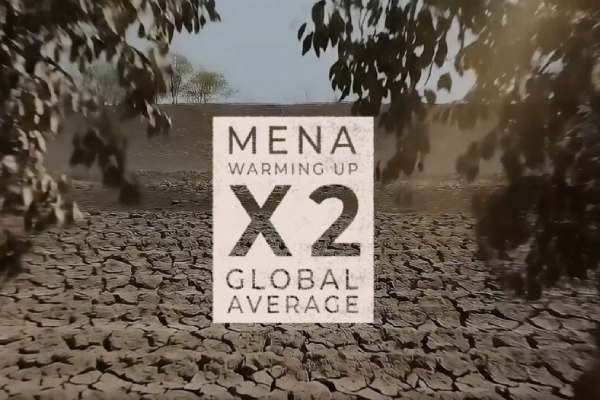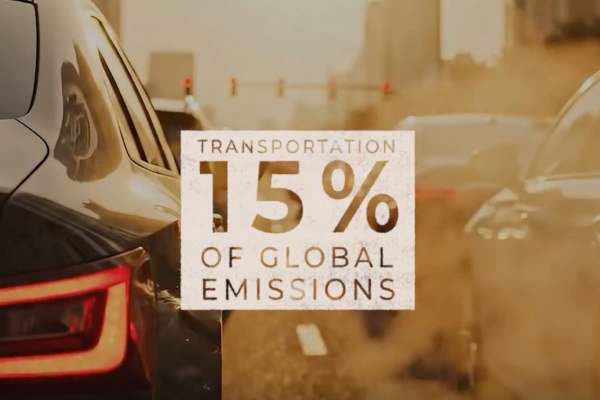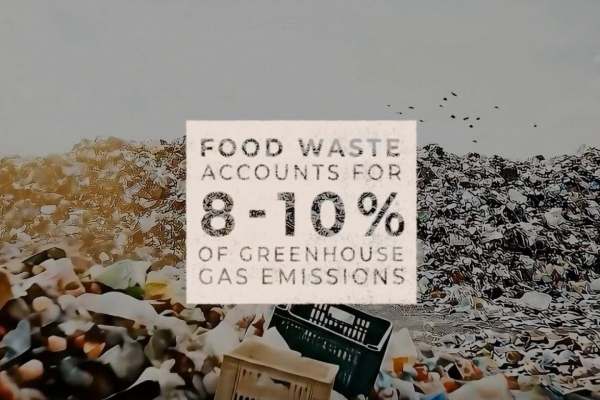
Climate action is about our
everyday choices
what we buy and eat, how we move and live
About the project
The Climate Community Project is a climate literacy initiative focused on transforming climate action into a relatable, everyday responsibility, ensuring that the community within the Arab World drives meaningful change to cut emissions in line with a 1.5 °C pathway set forth by the Paris Agreement to limit temperature rise in order to mitigate the dire consequences of climate change on people and planet. This initiative showcases simple, accessible solutions that members of the community can implement in their everyday lives.
This video is a story of everyday shifts, small actions with big impact, and the people leading them. It can be your story, too.
WHY WE SHOULD TAKE ACTION?

At 1.5 °C of warming, we’ll face more frequent heatwaves, droughts and food shortages, rising risks to our health, clean water, and livelihoods—while glaciers dwindle, coral reefs decline sharply, and wildlife loss begins to bite. By 2 °C and beyond, storms, floods, wildfires, and water scarcity hit harder; cities and farms become more vulnerable; ecosystems suffer mass die-offs; and by 3–4 °C warming, we could see vast shifts in forests, the extinction of half of tropical marine life, and severe water crises for billions. Each fractional degree matters—a warmer planet means escalating threats to our daily lives, from what we eat and drink to the stability of our homes and communities 1
Global temperatures are nearing a dangerous 1.5°C rise and continuing with current policies could result in a global mean surface temperature increase of 2.6-3.1°C this century. 2
Global greenhouse gas emissions have been rising by 1.3% yearly, hitting 57.1 gigatons of CO2 in 2023. To stay on track for limiting global temperature rise to 1.5°C, emissions need to drop 42% by 2030 and 57% by 2035 compared to 2019 levels. Every tiny bit of temperature avoided means saved lives, protected economies, and conserved biodiversity 3
- IPCC, 2023: Climate Change 2023: Synthesis Report. Contribution of Working Groups I, II and III to the Sixth Assessment Report of the Intergovernmental Panel on Climate Change [Core Writing Team, H. Lee and J. Romero (eds.)]. IPCC, Geneva, Switzerland, pp. 35–115 https://www.ipcc.ch/report/ar6/syr/downloads/report/IPCC_AR6_SYR_FullVolume.pdf ↩
- United Nations Environment Programme (2024). Emissions Gap Report 2024: No more hot air … please! With a massive gap between rhetoric and reality, countries draft new climate commitments. Nairobi. https://wedocs.unep.org/handle/20.500.11822/46404;jsessionid=87FE238F6AC022BCEE0FD9108C5349EB ↩
- Food and Agriculture Organization of the United Nations (2017). Livestock solutions for climate change. Rome, Italy: FAO. Technical Paper. https://openknowledge.fao.org/handle/20.500.14283/i8098en ↩

The Middle East and North Africa (MENA) is the world’s most water-scarce region, holding only about 1% of global freshwater resources despite having approximately 6% of the global population. This scarcity is worsened by climate change, which is severely compromising water security, land sustainability, food security, and ecosystems across the region
MENA’s population is expected to nearly double by 2050 1
In a global warming scenario of 4°C above pre-industrial levels , summer temperatures in MENA could be up to 8°C warmer in parts of Algeria, Saudi Arabia and Iraq by the end of the century, with extreme high temperatures reaching 56°C. Precipitation variability will worsen, with Mediterranean coasts receiving 10-20% less rain in a 2°C warming scenario and up to 50% less rain in a 4°C scenario. Precipitation variability will worsen, with Mediterranean coasts receiving 10-20% less rain in a 2°C warming scenario and up to 50% less rain in a 4°C scenario. Sea levels could rise by 0.36m in a 1.5°C warming scenario and 0.6m in a 4° C scenario by the end of the century 2.
Nearly 55 million people in MENA were already food insecure in 2019 3
West Asia has experienced comparable warming patterns, with temperatures rising at almost twice the global average. In 2024, temperatures were significantly above average across large parts of the Middle East, including Iraq, Iran, the Arabian Peninsula, and the Levant region 4.
Climate-related disasters in the Middle East have caused around $2 billion in direct damages annually since 2000, indicating substantial economic impacts. It has also resulted in an average decline of 1-2 percentage points in real GDP growth for the region, with permanent losses in some countries 5
- UNICEF Middle East & North Africa Regional Office. (2021). Generation2030: Growing up in the Middle East and North Africa. UNICEF MENA. Retrieved from https://www.unicef.org/mena/media/4141/file/mena-gen2030.pdf ↩
- United Arab Emirates Ministry of Climate Change & Environment. 2022. Save one-third of food from the bin to build a sustainable future. https://www.moccae.gov.ae/en/media-center/news/21/4/2022/save-one-third-of-food-from-the-bin-to-build-a-sustainable-future.aspx#page=1 ↩
- World Bank Group (2021). MENA Climate Roadmap 2021–2025. Washington, D.C.: World Bank. Available at: https://thedocs.worldbank.org/en/doc/6f868d4a875db3ef23ef1dc747fcf2ca-0280012022/original/MENA-Roadmap-Final-01-20.pdf ↩
- WMO (2025). State of the Climate in Asia 2024. World Meteorological Organization. https://library.wmo.int/viewer/69575/download?file=WMO-1373-2025_en.pdf&type=pdf&navigator=1 ↩
- International Monetary Fund (2022). Feeling the Heat: Adapting to Climate Change in the Middle East and Central Asia. Departmental Paper No. 2022/008. Washington, D.C.: International Monetary Fund. Available at: https://www.imf.org/en/Publications/Departmental-Papers-Policy-Papers/Issues/2022/03/25/Feeling-the-Heat-Adapting-to-Climate-Change-in-the-Middle-East-and-Central-Asia-464856 ↩

High energy consumption and water waste in homes.
50 litres is the minimum water needed per person per day for drinking and personal hygiene (within 1 km), including bathing and laundry.1 Many GCC countries exceed 500 litres per person per day. 2
Stay cool: close windows and blinds when its hotter outside 3
In the Arab region, the residential and service sectors account for at least one-third of all primary energy consumption and more than 60% of electrical energy consumption, of which the domestic sector accounts for over 70%. 4
- UNICEF. WATER, SANITATION, AND HYGIENE (WASH) https://www.corecommitments.unicef.org/ccc-2-3-7 ↩
- World Bank Group. 2024. From Scarcity to Sustainability: The GCC's Journey Towards Water Security. https://www.worldbank.org/en/news/opinion/2024/03/26/from-scarcity-to-sustainability-the-gcc-s-journey-towards-water-security ↩
- WHO. 2024. Heat and Health. https://www.who.int/news-room/fact-sheets/detail/climate-change-heat-and-health ↩
- UN ESCWA. 2021. Up-scaling Energy Efficiency in the residential and services sectors in the Arab Region, UNDA. https://archive.unescwa.org/sub-site/scaling-energy-efficiency-residential-services-arab-region ↩

Over-reliance on fossil fuel-powered transportation.
The transport sector accounts for ~15% of total global GHG emissions. 1
~70% of direct transport emissions come from road vehicles, while ~1%, ~11%, and ~12% come from rail, shipping, and aviation, respectively. 2
As part of the RAKTA plan 2023–2030, Ras Al Khaimah has introduced new-generation solar-powered bus shelters made of locally produced materials to support sustainable mobility and public transport use. 3
Sharjah's taxi fleet already consists of ~83% hybrid and environmentally friendly cars, with a goal of 100% by 2027. 4
- UNEP. 2024. Emissions Gap Report https://unepccc.org/emissions-gap-reports/ ↩
- IPCC. 2023. IPCC Sixth Assessment Report https://www.ipcc.ch/report/ar6/wg3/chapter/chapter-10/ ↩
- United Arab Emirates. (2024). Third Nationally Determined Contribution (NDC 3.0) – Accelerating Action Towards Mission 1.5 °C. United Nations Framework Convention on Climate Change (UNFCCC). November 2024 https://unfccc.int/sites/default/files/2024-11/UAE-NDC3.0.pdf ↩
- International Monetary Fund (2022). Feeling the Heat: Adapting to Climate Change in the Middle East and Central Asia. Departmental Paper No. 2022/008. Washington, D.C. https://www.imf.org/-/media/Files/Publications/DP/2022/English/ACCMECAEA.ashx ↩

Food waste and unsustainable food production contribute to greenhouse gas emissions
Meat and dairy production responsible for over 60% of all food based greenhouse gas emissions 1
Animal farming and transport each cause about 15% of the pollution that’s warming our planet.
In addition to producing methane, a powerful gas that warms the planet, it also uses up a huge amount of natural resources. Livestock need massive amounts of water, land, and feed. In fact, animals eat around 1 billion tonnes of grain every year (enough to feed 3.5 billion people). That grain often relies on chemical fertilizers, which also harm the environment. 2
Livestock supply chains account for 7.1 GT CO2, equivalent to 14.5% of global anthropogenic greenhouse gas emissions. Cattle (beef, milk) are responsible for about two-thirds of that total, largely due to methane emissions resulting from rumen fermentation.3
When food is thrown away, all the water, energy, and resources used to produce it are wasted too.
Altogether, food loss and waste are responsible for 8 to 10% of the world’s climate pollution 4
A third of the world's food production is thrown in the trash. This equates to US$ 1 trillion in food waste annually, or 1.3 billion tons, which is equivalent to the weight of 2,900 Burj Khalifa. 5
1 kg of cheese equals 23.0 kg of greenhouse gas emissions. Ranking fourth in the list of food types contributing to significant carbon footprint. 6
In 2022 there were 1.05 billion tonnes of food waste generated (including inedible parts), amounting to 132 kilograms per capita and almost one-fifth of all food available to consumers. Out of the total food wasted in 2022, 60 per cent happened at the household level, with food services responsible for 28 per cent and retail 12 per cent.7
- Food and Agriculture Organization of the United Nations (2013). Greenhouse Gas Emissions from Ruminant Supply Chains: A Global Life Cycle Assessment. Rome, Italy: FAO. 214 pp. ISBN 978‑92‑5‑107945‑4. Available at: FAO Open Knowledge Repository https://www.fao.org/4/i3461e/i3461e.pdf ↩
- Food and Agriculture Organization of the United Nations (2017). Livestock solutions for climate change. Rome, Italy: FAO. Technical Paper. https://openknowledge.fao.org/handle/20.500.14283/i8098en ↩
- UNFAO, Livestock solutions for climate change. https://www.fao.org/family-farming/detail/en/c/1634679/ ↩
- UNFCC, 2024. https://unfccc.int/news/food-loss-and-waste-account-for-8-10-of-annual-global-greenhouse-gas-emissions-cost-usd-1-trillion ↩
- United Arab Emirates Ministry of Climate Change & Environment. 2022. Save one-third of food from the bin to build a sustainable future. . https://www.moccae.gov.ae/en/media-center/news/21/4/2022/save-one-third-of-food-from-the-bin-to-build-a-sustainable-future.aspx#page=1 ↩
- United Nations. 2022. Food and Climate Change: Healthy diets for a healthier planet. https://www.un.org/en/climatechange/science/climate-issues/food ↩
- United Nations. 2024. Food Waste Index Report 2024. https://www.unep.org/resources/publication/food-waste-index-report-2024
United Nations. World squanders over 1 billion meals a day. https://www.unep.org/news-and-stories/press-release/world-squanders-over-1-billion-meals-day-un-report ↩

Overconsumption and wasteful purchasing contribute to emissions and environmental harm.
An estimated 2,700 liters of fresh water are needed to produce one cotton t-shirt, which is enough to supply one person's drinking water for two and a half years. The fashion industry uses 215 trillion liters of water annually and is accountable for between 2 and 8 percent of the world's greenhouse gas emissions, as well as major pollution, water extraction, and biodiversity impacts, including 9 percent of the annual microplastic losses to oceans.
The 215 trillion liters of water is equivalent to 86 million Olympic-sized swimming pools.
Eleven per cent of plastic waste comes from clothing and textiles, making it the third biggest contributor to plastic waste. 1
The fashion industry uses ~215 trillion liters of water annually and is accountable for between 2% and 8% of the world's GHG emissions, along with major pollution, water extraction, and biodiversity impacts, including ~9% of annual microplastic losses to oceans. 2
The 215 trillion liters of water is equivalent to ~86 million Olympic-sized swimming pools. 3
Eleven percent of plastic waste comes from clothing and textiles, making it the third biggest contributor to plastic waste. 4
- UN. ActNow for Zero-Waste Fashion. https://www.un.org/sustainabledevelopment/blog/2019/08/actnow-for-zero-waste-fashion/ ↩
- UNEP. 2023. UNEP and UN Climate Change provide fashion communicators with practical guide to contribute to sustainable change. https://www.unep.org/news-and-stories/press-release/unep-and-un-climate-change-provide-fashion-communicators-practical ↩
- United Nations. 2025. Fast fashion fuelling global waste crisis, UN chief warns. https://news.un.org/en/story/2025/03/1161636 ↩
- UN Habitat. 2025. The International Day of Zero Waste. https://unhabitat.org/sites/default/files/2025/02/zwd2025_-_key_messages_final.pdf ↩
What can you do next?
Learn
Watch the video and learn more about small actions you can take in your daily life
Do
Do the challenge and take the pledge! Showcase the action of choice; Tag @Goumbook @UNEP #Climateliteracyproject
Share
Sharing is caring, spread the word with others!
Watch
Watch the video, It can be your story, too.
Pledge
Take a pledge, choose an action that resonates with you
